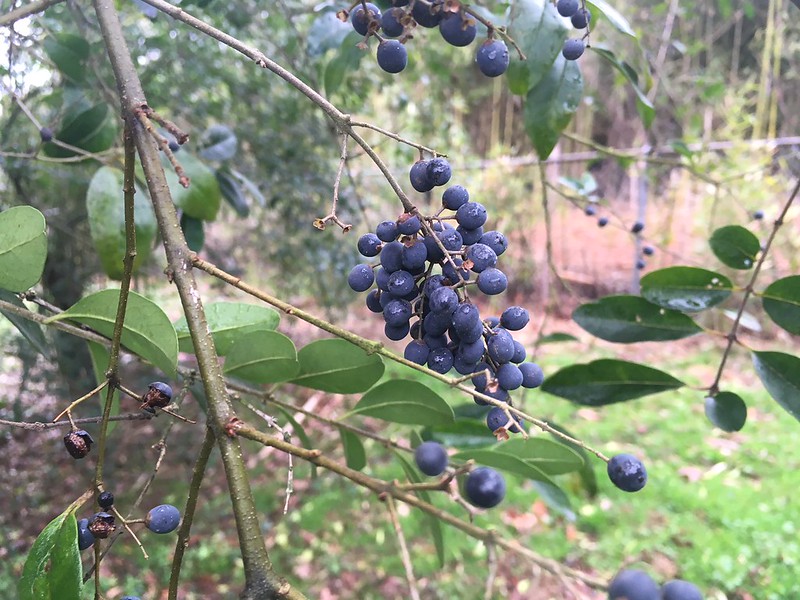June 15, 2021
Invasive plant removal field day aims to help Arkansans identify, control problem plants
By Ryan McGeeney
U of A System Division of Agriculture
Fast Facts:
- June 30 field day scheduled 9:30 – noon; no cost to attend
- Research site established in February 2020
- Invasive plant of focus: Chinese Privet
(455 words)
LITTLE ROCK — Every now and again, the constant gardener is going to come across a plant that just doesn’t quite belong. Invasive plants, from Kudzu to Chinese Privet, are the bane of nearly every landscape, yard and garden in the Natural State — or at least, they’re giving it their best shot.
By some estimates, Chinese privet may make up as much as 3 percent of forest biomass in Arkansas. And in a state with more than 17 million forested acres, that’s no small-scale invasion.
A June 30 field day will help attendees learn to identify and efficiently remove invasive plants, including Chinese Privet and others. John Pennington, extension water quality educator for the University of Arkansas System Division of Agriculture, and Vic Ford, Associate Vice President for Agriculture and Natural Resources for the Division of Agriculture, will co-host the field day.
Pennington helped establish the invasive plant research site, located behind the Cooperative Extension Service State Headquarters, in February of 2020. The building is located at 2301 S. University
“Volunteers with Master Gardeners and Master Naturalists in Arkansas were curious about which methods might work best in their efforts to remove invasive privet,” Pennington said. “The purpose of the demonstration is to evaluate the effectiveness of a variety of commonly used methods of invasive plant control. The primary invasive plant of interest to control at this site is Chinese privet.”
“The goal of the program is to show results from various treatments at the invasive plant removal demonstration site out back, to share information on resources for removal and to show different tools for removal,” Pennington said.
“We will also be providing an opportunity for volunteers in attendance to help remove some more invasive plants that are out there in the demonstration plots and woods on the property,” he said, noting that volunteers will only be conducting removal with mechanical removal and cut-and-paint pesticide.
“This removal is to continue an effort to restore the environmental health, function, and diversity of our forested streamside/riparian area,” Pennington said.
Ford will showcase a basal bark sprayer, which uses oil with an ester formulation for an herbicide to penetrate bark, as well as other treatment methods.
Various methods of control and removal that have been used at the research site include:
- mechanical pulling
- cut stump and paint with glyphosate
- cut stump and paint with triclopyr
- foliar glyphosate
- foliar triclopyr
Pennington said that so far, “there has been no significant difference between any of the treatments to control the privet, but they all seem to be effective and require follow up treatment.”
There is no cost to attend. To register, contact Pennington by phone at 870-329-7009
or by email at jhpennington@uada.edu, or RSVP to the event on Facebook at https://www.facebook.com/events/169147858505008/.
To learn more about extension programs in Arkansas, contact your local Cooperative Extension Service agent or visit uaex.uada.edu. Follow us on Twitter at @AR_Extension.
About the Division of Agriculture
The University of Arkansas System Division of Agriculture’s mission is to strengthen agriculture, communities, and families by connecting trusted research to the adoption of best practices. Through the Agricultural Experiment Station and the Cooperative Extension Service, the Division of Agriculture conducts research and extension work within the nation’s historic land grant education system.
The Division of Agriculture is one of 20 entities within the University of Arkansas System. It has offices in all 75 counties in Arkansas and faculty on five system campuses.
Pursuant to 7 CFR § 15.3, the University of Arkansas System Division of Agriculture offers all its Extension and Research programs and services (including employment) without regard to race, color, sex, national origin, religion, age, disability, marital or veteran status, genetic information, sexual preference, pregnancy or any other legally protected status, and is an equal opportunity institution.
# # #
Media contact:
Ryan McGeeney
Communications Services
University of Arkansas System Division of Agriculture
Cooperative Extension Service
(501) 671-2120
rmcgeeney@uada.edu
